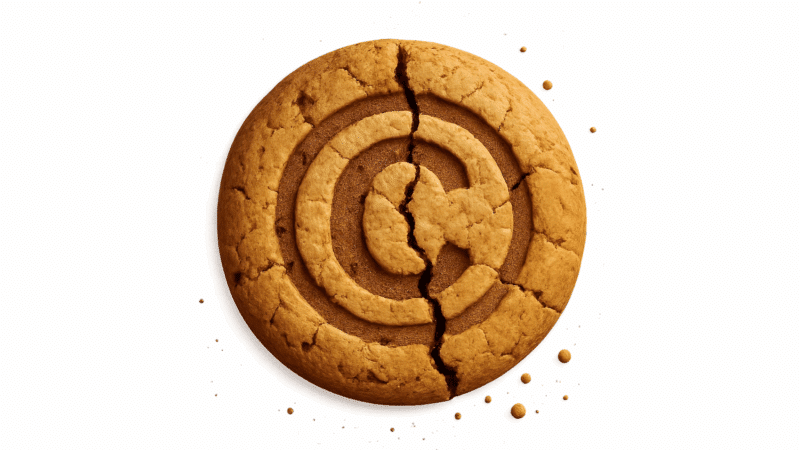
In April, Warner Music Group sued the viral bakery chain Crumbl for $23.85 million, claiming it used 159 copyrighted songs in TikTok and Instagram posts without securing proper licenses. The tracks included artists like Beyoncé, Taylor Swift, BTS, Coldplay and Dua Lipa.
That wasn’t a rogue error. Crumbl had already received a cease-and-desist letter from Warner in August 2023. However, the company kept using trending music in its content.
In one video posted in early 2024, the brand even joked about the situation: “We were gonna make a funny video to promote Mystery Cookie, but legal said we can’t use any trending audios.”
That moment, meant as a laugh, may cost them eight figures. And Crumbl’s not alone.
DSW was next — Expect more to follow
Just days after the Crumbl lawsuit made headlines, Warner hit DSW (Designer Shoe Warehouse) with a $30 million lawsuit over unauthorized use of music on social platforms.
It isn’t a coincidence. It’s part of a larger pattern: music labels are watching brands closely and taking action when they find patterns of infringement. Do you think your brand is too small to be noticed? Think again. As these lawsuits make clear, it’s not about your size — it’s about your content.
No, TikTok isn’t a license
A common misconception among social teams is that a song is free to use if it is available on TikTok. That’s false.
TikTok’s music licenses typically apply to personal use. If you’re a brand, influencer or creator using the platform to sell something or promote a product, that qualifies as commercial use under U.S. copyright law. TikTok’s terms don’t protect you from enforcement in those cases.
Some marketers assume that if a video is “muted” or uses a remix, it reduces their risk. It doesn’t. Today’s music rights holders use tools to detect audio fingerprints — even from short clips or low-volume background tracks.
“If software can detect it, you better believe the rights holders can,” said Liam Doolan, co-founder of CopyrightCheck.co, a platform that audits brand content for copyright violations.
Here is a short explainer from Liam Doolan of CopyrightCheck that breaks down the most common mistake marketers make when using music on TikTok.
This isn’t about music, but mindset
Let’s be honest: Crumbl’s strategy worked — until it didn’t. The company built its entire marketing engine on emotional, trend-driven content. And in today’s digital landscape, music is the emotional hook. Their social videos, powered by popular songs, helped them build a following, boost engagement and grow into a $2 billion brand.
But they didn’t pay for those songs, and now they’re paying for that decision. That’s emblematic of a broader problem in marketing: shortcut culture.
Brands move fast, chasing virality and often skipping the fundamentals. When success comes quickly, there’s little incentive to slow down and ask, “Are we doing this legally? Are we doing this ethically?”
Dig deeper: What makes content go viral, backed by research
This culture didn’t come out of nowhere
Our current environment rewards rule-breakers.
When public figures bend or ignore laws and institutions and face few consequences, it sends a message: Act first. Let someone else deal with the cleanup. Brands see Donald Trump governing through executive orders and dismantling agencies without legal clarity. The lesson: You can get away with anything, at least for a while.
Crumbl took that same approach. And now, the cleanup is here.
Working at a brand like MasterCard taught me the difference
Earlier in my career, I worked at Mastercard. We didn’t cut corners. Everything had to be reviewed by legal and compliance teams. If a celebrity’s image was involved, there were contracts. If we used music, we had the license. Every asset, visual, audio, or spoken, was cleared.
It wasn’t just about covering ourselves. It was about respecting the process and understanding our responsibility as a global brand.
Now that I work with smaller companies and startups, I see how often those practices are missing. Many teams move fast and assume no one’s watching. But copyright law doesn’t care how new or scrappy you are. The rules apply to everyone.
Influencers aren’t a loophole — they’re a liability
One part of the Crumbl lawsuit deserves more attention. Warner alleges that influencers were encouraged and sometimes rewarded to post videos using the same unlicensed songs. That’s commercial use. And that means the brand is still liable.
We’ve seen this pattern before. In 2023, Marriott faced similar issues when influencers posted content from comped stays that included trending music. Even if no money exchanged hands, the value of the product or experience was enough to trigger liability.
If a brand benefits from the content, they’re accountable for what’s in it.
Dig deeper: How influencer marketing became an essential marketing channel
There are tools to help, but you need to use them
CopyrightCheck, Liam Doolan’s company, is a platform that helps brands detect at-risk content. It scans public social feeds, identifies potential IP violations and gives a clear “red-yellow-green” status so companies can act.
It doesn’t require backend access and doesn’t take weeks. Yet most brands still don’t do this.
“Some of the biggest companies we work with had no idea they were at risk,” Doolan told me. “They assumed everything was fine because no one had said anything yet.”
That’s the mindset brands need to break.
And no, Duolingo doesn’t belong in this story
A quick note on another commonly mentioned brand: Duolingo.
Some people like to include Duolingo in these conversations because of its edgy social presence. But there’s no evidence that it has violated copyright law. Duolingo is known for working closely with legal teams to ensure it doesn’t cross the line, even when it pushes creative boundaries.
Let’s stop using Duolingo as a shorthand for “risk-taking.” If anything, they show how to be relevant without breaking the rules.
5 steps every brand should take now
Here are five straightforward steps to stay compliant and credible.
1. Audit your social content
Look at every platform where your brand is active — TikTok, Instagram, YouTube Shorts and Reels. Check for unlicensed music, movie clips or voiceovers.
2. Educate your teams
Make sure your social, influencer and agency partners understand copyright basics. Include clear terms in every contract and brief.
3. Use licensed or original audio
Platforms like Epidemic Sound, Artlist and Soundstripe offer royalty-free music options. They can also collaborate with artists to create unique music.
4. Remove risky posts — even old ones
If you can’t confirm licensing, take the post down. If it’s not generating value anymore, it’s not worth the legal risk.
5. Don’t assume bigger brands are playing by the rules
Crumbl and DSW looked like social leaders. Now they’re defendants. What you see on a brand’s feed doesn’t tell you what’s happening in their legal department.
The cost of ignoring IP is getting higher
Crumbl didn’t just make a mistake. They took a risk. A calculated one. And it worked — until it didn’t. They’re a case study of what happens when a brand grows using content it didn’t pay for.
It isn’t about punishing creativity. It’s about respecting creators. It’s about building brands correctly because you can’t build trust by borrowing. And eventually, someone will send the invoice.
Dig deeper: The zero-sum game of social media: When going viral spells disaster
The post Crumbl’s legal trouble shows the risks of shortcut marketing appeared first on MarTech.
